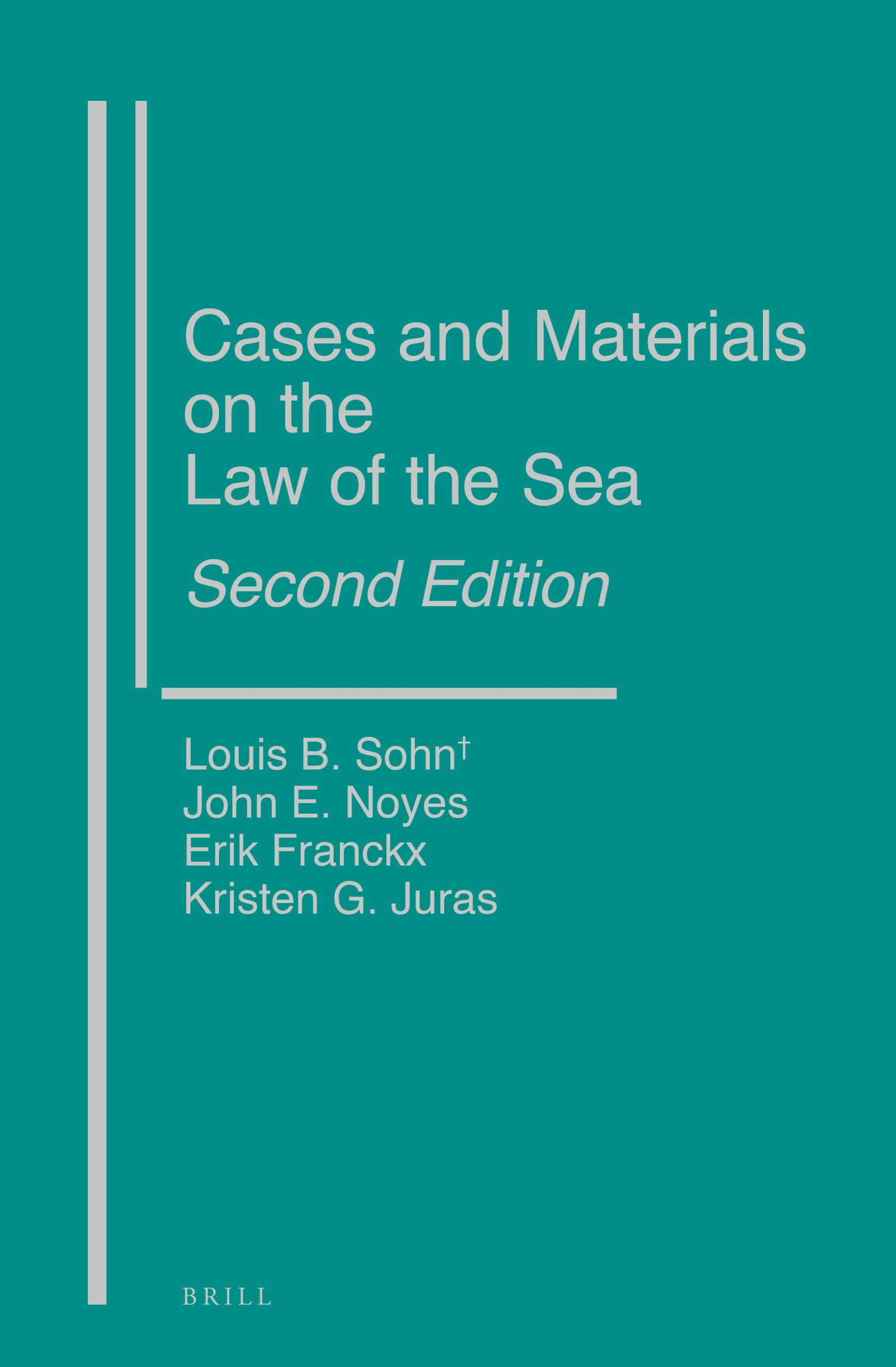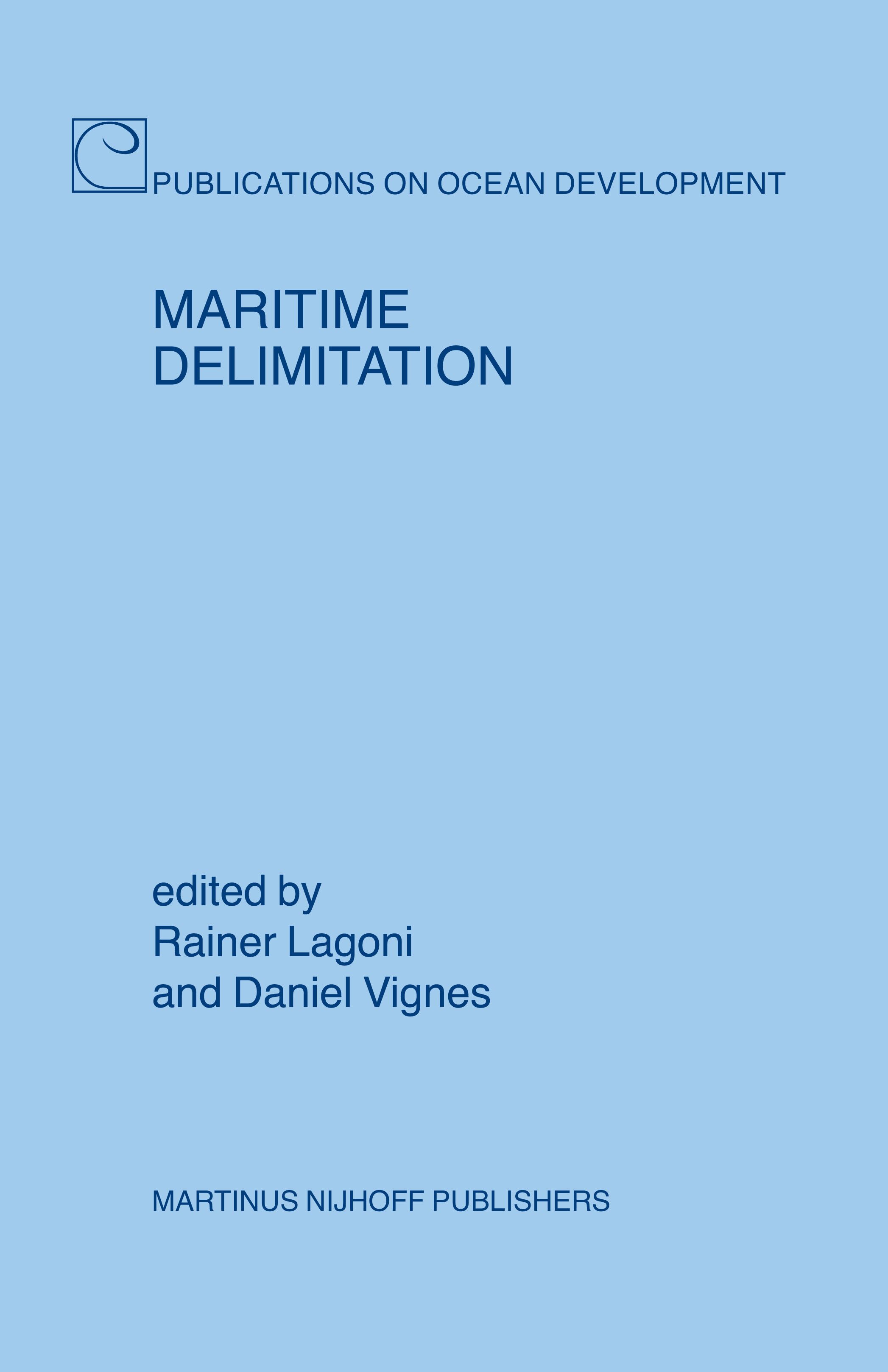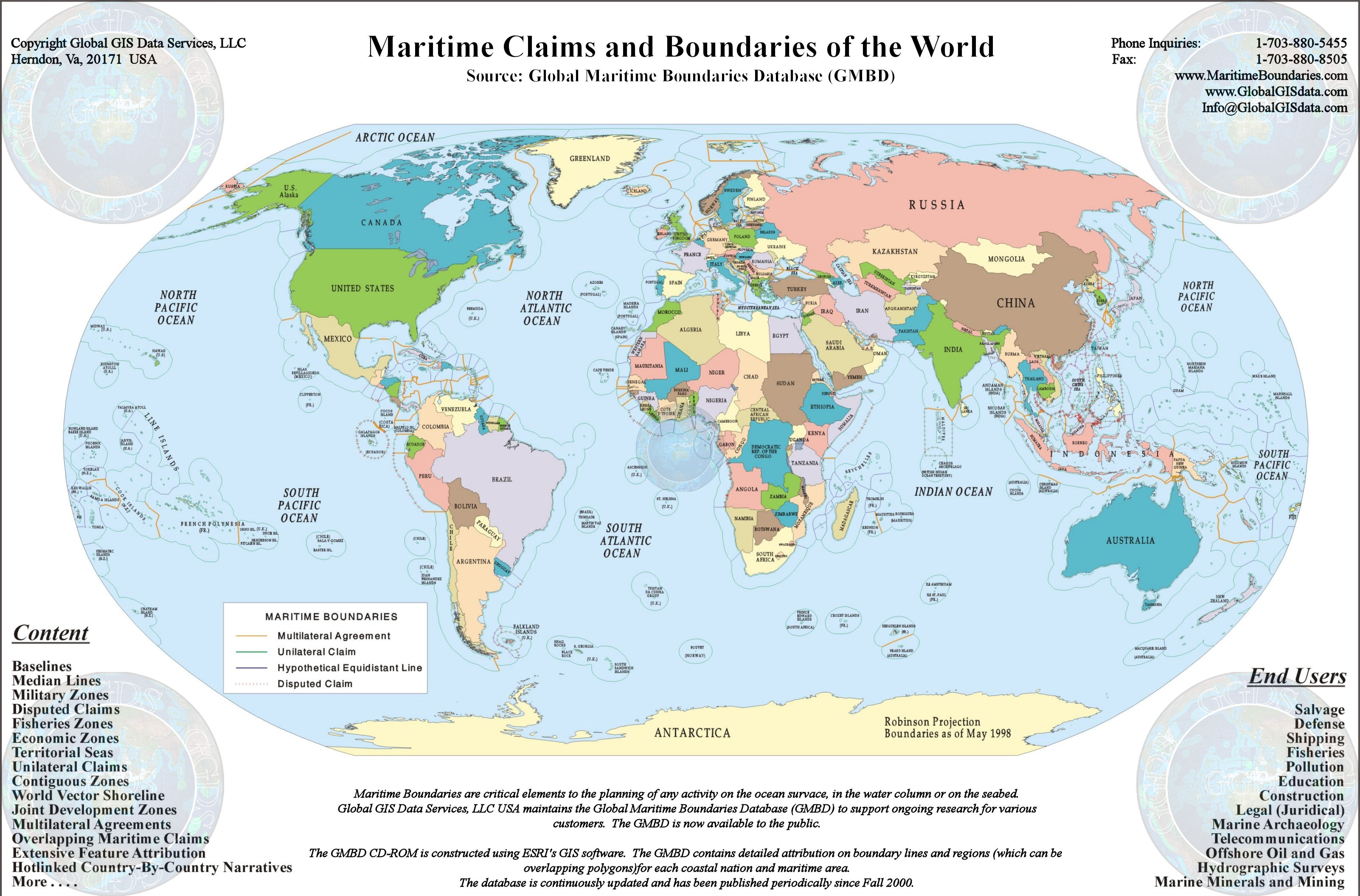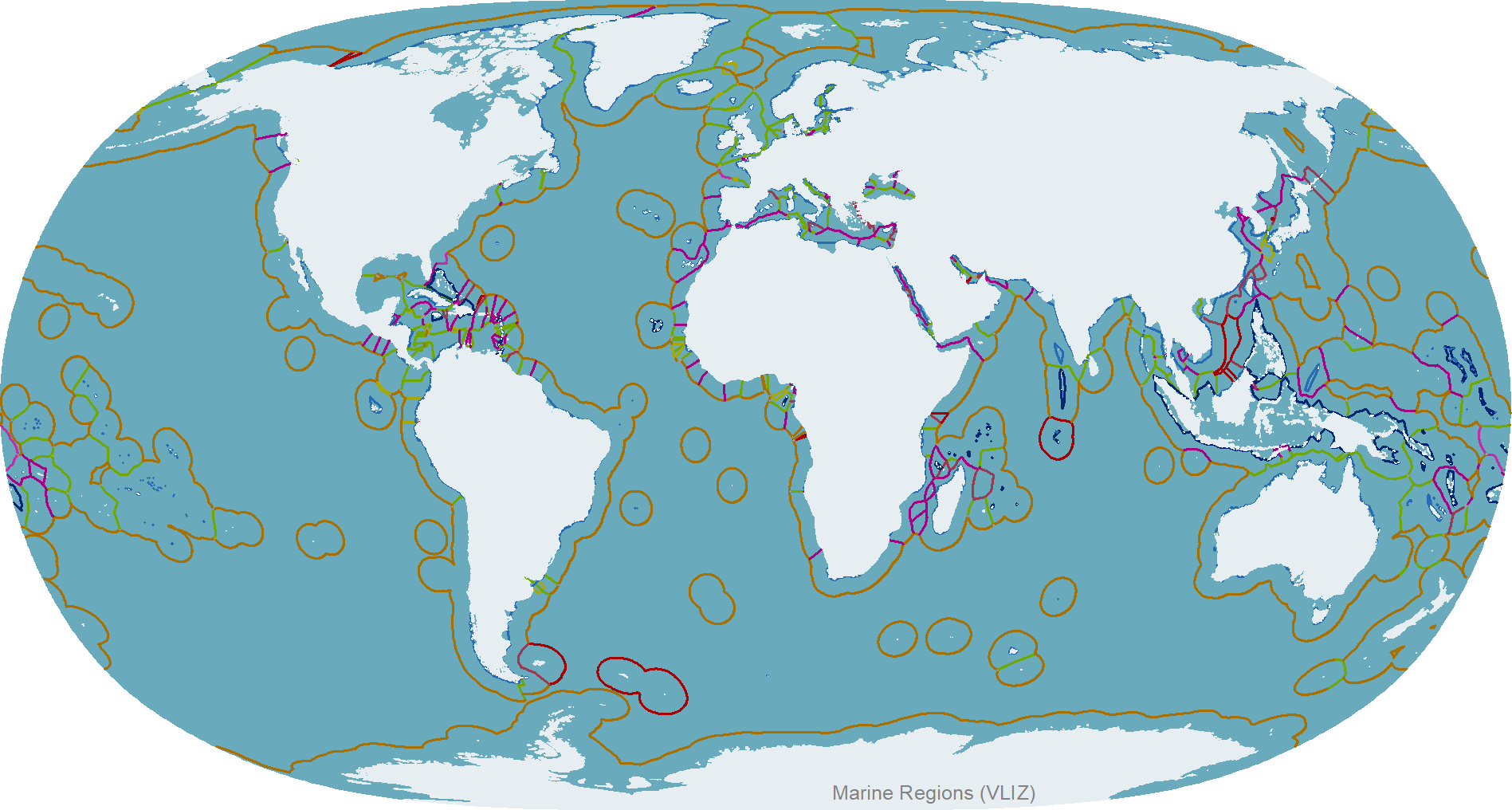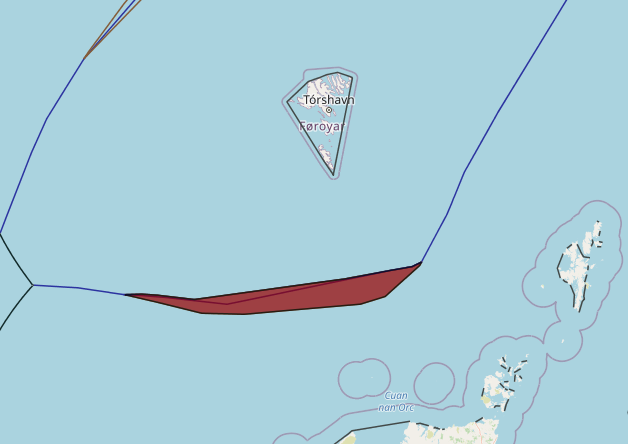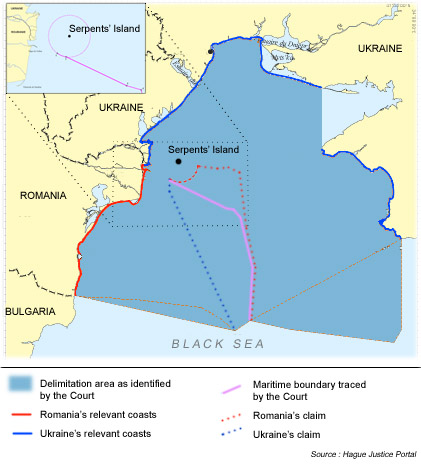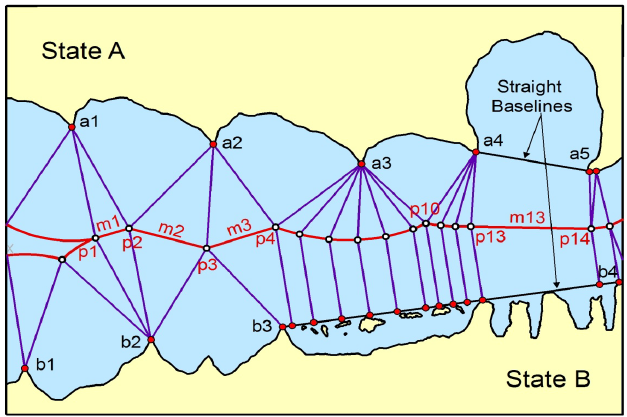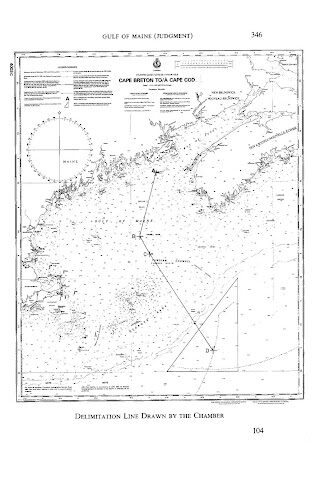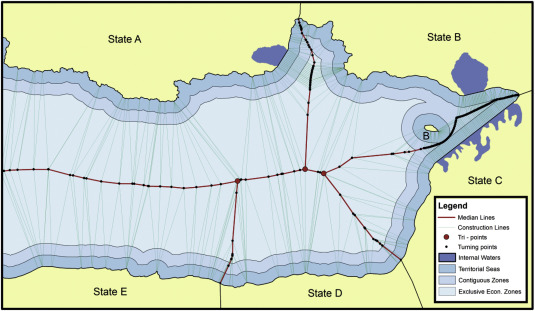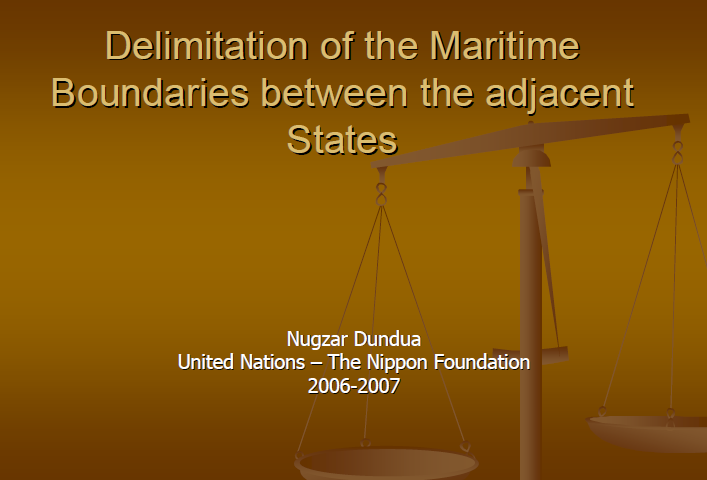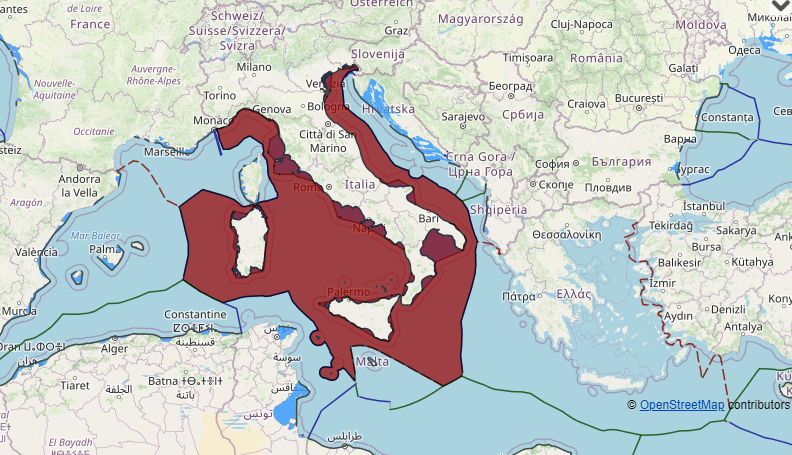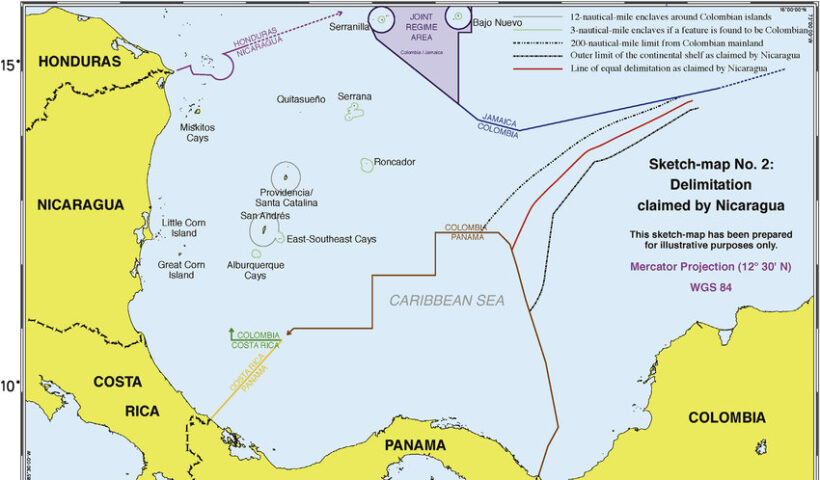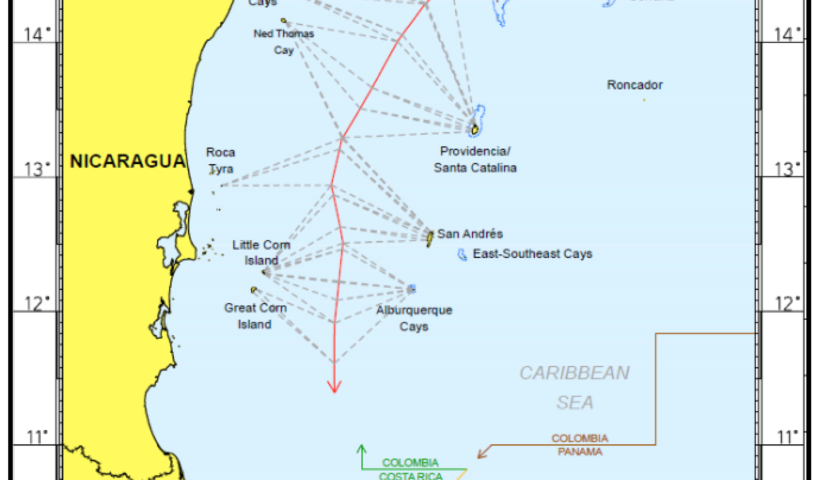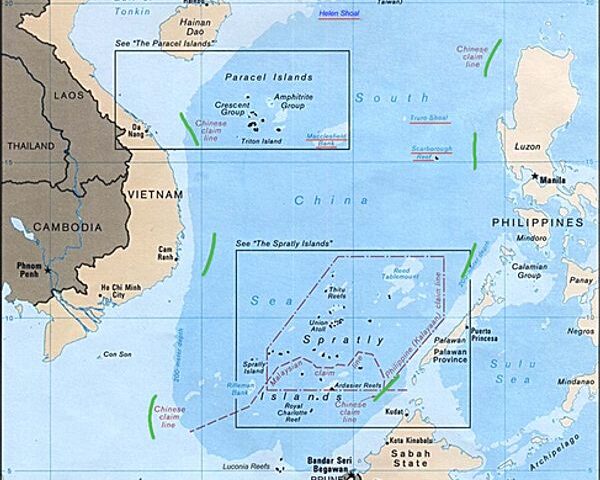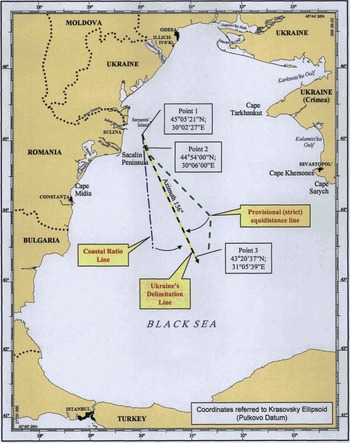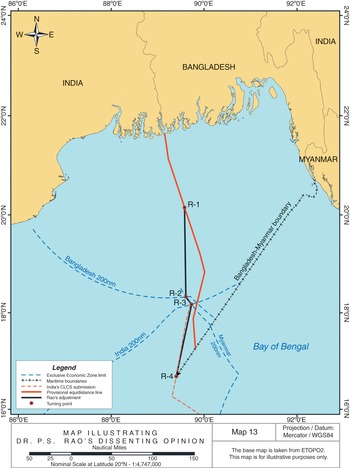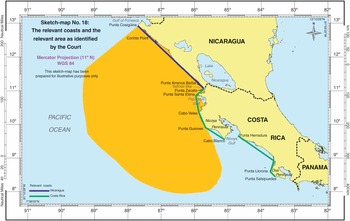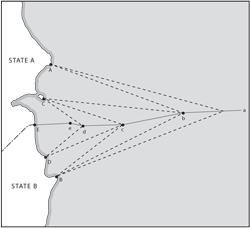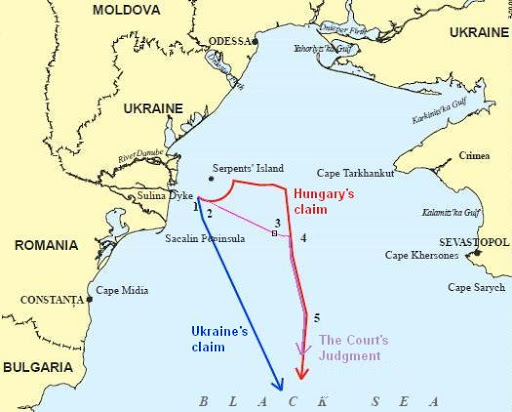please mail to us (info(@)iilss.net) or send your request in contact page for buying this book with 50% discount Cases and Materialson the Law of…
View More Cases and Materials on the Law of the Sea, Second Edition, download pdfTag: maritime delimitation
MARITIME DELIMITATION eBook download in pdf
please mail to us (info(@)iilss.net) or send your request in contact page for buying this book with 50% discount Maritime DelimitationEDITED BYRAINER LAGONIANDDANIEL VIGNESMARTINUS NIJHOFF…
View More MARITIME DELIMITATION eBook download in pdfDevelopment of the Studies on Maritime Delimitation
Since 1945, in particular, many studies have been written in the field of maritime delimitation. Most of them have focused on the case law. In fact, as is shown in the bibliography, there are many articles relating to international judgments in this field. Since it has been argued that the law of maritime delimitation has developed through international jurisprudence, it was only natural that writers turned to the analysis of case law in this field.
View More Development of the Studies on Maritime DelimitationImportance of Maritime Delimitation in International Law of the Sea
MARITIME SPACES IN international law of the sea are, in essence, defined in relation to the coastal State jurisdiction over each maritime space. Thus, coastal State jurisdiction is the primary criterion in characterising maritime spaces. The ambit of coastal State jurisdiction is in principle defined spatially, based on distance from the coast. According to the 1982 UN Convention on the Law of the Sea, the territorial sea in which a coastal State exercises territorial sovereignty shall not exceed 12 nautical miles measured from the relevant baseline (Article 3). The contiguous zone over which a limited jurisdiction is exercised by the coastal State may not extend beyond 24 nautical miles from that line (Article 33). The Exclusive Economic Zone (EEZ), where the coastal State may exercise sovereign rights regarding the exploration and exploitation of natural resources, shall not extend beyond 200 nautical miles (Article 57). The same is in principle true for continental shelves of less than 200 nautical miles (Article 76(1)). It would seem safe to say that these rules have now become customary law. Hence, the definition of the spatial extent of coastal State jurisdiction is at the heart of the international law of the sea.
View More Importance of Maritime Delimitation in International Law of the SeaDenmark(Faroe Islands)–United Kingdom maritime boundary and Special Area
In May 1999 Denmark and the United Kingdom concluded an agreement (1999 Agreement) concerning their overlapping claims to fisheries zones and continental shelf in North Atlantic waters located between the Faroe Islands and Scotland. The 1999 Agreement designates continental shelf and fisheries zone boundaries in addition to a ‘Special Area’ of water column that remains subject to the overlapping jurisdictional claims both States.
View More Denmark(Faroe Islands)–United Kingdom maritime boundary and Special AreaCanada–United States overlapping claims in North Atlantic and surrounding Machias Seal Island and North Rock
In 1979 the Canada and the United States agreed to empower a Chamber of the ICJ to designate a single seabed and water-column boundary in the Gulf of Maine. The Chamber’s 1984 Judgment establishes a segmented boundary that commences at an offshore point mutually agreed by both States (Point A) and terminates at the point of intersection with the United States’ 200 nautical mile limit. McDorman notes that, prior to the conclusion of the 1979 agreement, Canadian and US negotiators had proposed several options concerning provisional joint management of overlapping claims in the Gulf of Maine. These proposals did not gain traction because delimitation issues proved difficult to set aside. In particular, the location of competing boundary claims influenced political views concerning the fair division of fisheries and potential hydrocarbon resources.
View More Canada–United States overlapping claims in North Atlantic and surrounding Machias Seal Island and North RockThe Development of the Case Law of Maritime Delimitation: From Equity to Normativity
In parallel with the codification process in the 1958 Geneva Conventions and the 1982 UNCLOS, the law of maritime delimitation was subject to a progressive development through litigation and arbitration. Both processes were at the same time independent and interrelated. The scope of this part is to provide a broad historical background of the evolution of the case law of maritime delimitation in order to better analyze in the following section the conditions, under which the Equidistance/Relevant Circumstances principle had emerged and developed.
View More The Development of the Case Law of Maritime Delimitation: From Equity to NormativityCodification of Maritime Delimitation
The first attempt at codification of the customary law of maritime delimitation started with the 1930 Hague Conference under the auspices of the League of Nations. The Hague Conference failed to reach its purpose and the following World War II period was not an appropriate period to deal with issues of maritime delimitation. In the aftermath of World War II, the creation of the United Nations Organization (UN) and the multiple individual claims of States over maritime spaces, such as the Truman Proclamation and the Santiago Declaration raised the need of re-starting the process of codification of the law of maritime delimitation. The adoption of the 1958 Geneva Conventions which followed was a successful initiative, at least to some extent.
View More Codification of Maritime Delimitationwhat is the meaning of single maritime boundaries line (single line with dual purpose or all-purpose line)
In theory, the delimitation of the exclusive economic zone could follow a different line than the continental shelf. For practical reasons, however, states seem to have wanted to have their maritime zones delimited by a single maritime boundary for all purposes. The reason for this lies first of all in the shared overlap of natural resources between the two zones.
View More what is the meaning of single maritime boundaries line (single line with dual purpose or all-purpose line)Three-stage Approach of Maritime Delimitation in law of the sea (customary international law and court decisions)
Three-stage Approach of Maritime Delimitation that the International Court of Justice (ICJ) “has developed a settled jurisprudence relating to the interpretation of those provisions”, while quoting the Court’s description of the three-stage approach of first drawing a provisional delimitation line, then assessing that line in the light of the relevant circumstances of the case and finally applying the disproportionality test to determine whether the proposed boundary results in an equitable solution, which has been developed in the context of the delimitation of the continental shelf and the exclusive economic zone. “international law thus calls for the application of an equidistance line, unless another line is required by special circumstances”. However, the assertion that the ICJ’s three-stage approach is settled jurisprudence in relation to article 15 is not borne out by a reading of the judgments. The quotation in paragraph 999 of the Award is from the judgment of the Court in Peru v. Chile. As the Award indicates, the Court in this connection makes reference to its earlier decisions in Black Sea and Territorial and Maritime Dispute (Nicaragua v. Colombia). All three decisions discuss the three-stage approach in relation to the delimitation of the exclusive economic zone and the continental shelf and there is nothing in these judgments suggesting that the Court considered that the three-stage approach applies equally to the delimitation of the territorial sea under article 15 of the Convention.
View More Three-stage Approach of Maritime Delimitation in law of the sea (customary international law and court decisions)The Truman Proclamation, 1945 (Proclamation 2667—Policy of the United States With Respect to the Natural Resources of the Subsoil and Sea Bed of the Continental Shelf)
U.S. President Harry S. Truman’s executive order on September 28, 1945, proclaiming that the resources on the continental shelf contiguous to the United States belonged to the United States. This was a radical departure from the existing approach, under which the two basic principles of the law of the sea had been a narrow strip of coastal waters under the exclusive sovereignty of the coastal state and an unregulated area beyond that known as the high seas. The speed at which Truman’s continental shelf concept was recognized through emulation or acquiescence led Sir Hersch Lauterpacht to declare in 1950 that it represented virtually “instant custom.”
View More The Truman Proclamation, 1945 (Proclamation 2667—Policy of the United States With Respect to the Natural Resources of the Subsoil and Sea Bed of the Continental Shelf)what is the meaning of Special Circumstances and Relevant Circumstances in delimitation process at law of the sea
Special circumstances are those circumstances which might modify the results produced by an unqualified application of the equidistance principles. Small islands and maritime features are arguably the archetypical special circumstances as much in the delimitation of the territorial sea as in the delimitation of the continental shelf/EEZ. The Court has recognized in numerous cases, including the North Sea Continental Shelf, Tunisia/Libya, Libya/Malta and Qatar v. Bahrain cases that the equitableness of an equidistance line depends on whether the precaution is taken of eliminating the disproportionate effect of certain islets, rocks and minor coastal projections.
View More what is the meaning of Special Circumstances and Relevant Circumstances in delimitation process at law of the seaequitable result in maritime delimitation and most acceptable law for delimitation process
The notion of equity is at the heart of the delimitation of the CS(continental shelf) and entered into the delimitation process with the 1945 proclamation of US President Truman, concerning the delimitation of the CS between the Unites States and adjacent States. The Truman proclamation inspired the Court during the 1969 North Sea case, when the Court stated that “delimitation is to be effected by agreement in accordance with equitable principles, and taking into account all the relevant circumstances.” This idea became doctrine and was reiterated and confirmed by the ICJ and arbitral tribunals in subsequent cases. Articles 74 and 83 of the 1982 LOS Convention concerning the delimitation of the EEZ and the CS provides for effecting the delimitation by agreement, in accordance with international law and in order to achieve an equitable result.
View More equitable result in maritime delimitation and most acceptable law for delimitation processDelimitation of the Maritime Boundaries between the adjacent States
Delimitation of the Maritime Boundaries between the adjacent Boundaries between the adjacent States , a PDF+PPT lecture by Nugzar Dundua, United Nations United Nations, The…
View More Delimitation of the Maritime Boundaries between the adjacent StatesItaly maritime claims about baselines, internal waters, territorial waters, exclusive economic zone and continental shelf(between former Yugoslavia, Tunisia, Greece, Albania and in Mediterranean sea, Adriatic sea, Ionian sea, tyrrhenian sea and Sardinia)
Italy maritime claims about baselines, internal waters, territorial waters, exclusive economic zone and continental shelf(between former Yugoslavia, Tunisia, Greece, Albania and in Mediterranean sea, Adriatic sea, Ionian sea, tyrrhenian sea and Sardinia), italy, Italy and greece maritime delimitation, Italy continental shelf map, Italy internal waters, Italy marine zone, Italy maritime boundaries, Italy maritime claims, Italy territorial waters map, Maritime Claims, maritime delimitation
View More Italy maritime claims about baselines, internal waters, territorial waters, exclusive economic zone and continental shelf(between former Yugoslavia, Tunisia, Greece, Albania and in Mediterranean sea, Adriatic sea, Ionian sea, tyrrhenian sea and Sardinia)Legal Nature of Maritime Delimitation in law of the sea and customary international law
Maritime delimitation may be defined as the process of establishing lines separating the spatial ambit of coastal State jurisdiction over maritime space where the legal title overlaps with that of another State. This definition calls for five comments:… Legal Nature of Maritime Delimitation in law of the sea and customary international law, a just and equitable share, continental shelf, délimitation constitutive, délimitation déclarative, EEZ, geographical co-ordinates, Gulf of Maine case, internal waters, International Sea-Bed Authority, maritime delimitation, North Sea Continental Shelf cases, provisional delimitation line, territorial sea, What are the stages of maritime boundary?, What is a single maritime boundary?, What is delimited boundary?, What is maritime space?, What is median line principle?, What is the difference between demarcation and delimitation?, Which law delimits world seas?
View More Legal Nature of Maritime Delimitation in law of the sea and customary international lawDelimitation of the Continental Shelf Beyond 200 Nautical Miles in law of the sea and customary international law
The delimitation of the continental shelf beyond 200 nautical miles is a comparatively new subject in the law of maritime delimitation. In this regard, three issues need further consideration: (i) entitlements to the continental shelf beyond 200 nautical miles, (ii) the relationship between the CLCS and an international court or tribunal, and (iii) the methodology.. Delimitation of the Continental Shelf Beyond 200 Nautical Miles in law of the sea and customary international law, Bangladesh/India case, Bangladesh/Myanmar case, continental shelf, Delimitation of the Continental Shelf, Delimitation of the Continental Shelf Beyond 200 Nautical Miles, Ghana/Côte d’Ivoire cases, LOSC, maritime delimitation, What are the characteristics of the continental shelf?, What does continental slope mean?, What extended continental shelf?, What is continental shelf limit?, What is the importance of continental shelf?, What is the largest continental shelf?, Where is the continental shelf?
View More Delimitation of the Continental Shelf Beyond 200 Nautical Miles in law of the sea and customary international lawJudicial Creativity in the Law of Maritime Delimitation
Judicial Creativity in the Law of Maritime Delimitation, Anglo-French Continental Shelf Arbitration, Gulf of Maine cases, maritime delimitation, opinio juris, What are the stages of maritime boundary?, What is a single maritime boundary?, What is delimited boundary?, What is maritime space?, What is median line principle?, What is the difference between demarcation and delimitation?, Which law delimits world seas?
View More Judicial Creativity in the Law of Maritime DelimitationHistoric Title and Historic Rights as a RELEVANT CIRCUMSTANCES in delimitation process in law of the sea and customary international law
Historic Title and Historic Rights as a RELEVANT CIRCUMSTANCES in delimitation process in law of the sea and customary international law, continental shelf delimitation, delimitation process, EEZ, EEZ delimitation, historic rights, Historic Title, LOSC, maritime areas, maritime delimitation, relevant circumstances, South China Sea Arbitration
View More Historic Title and Historic Rights as a RELEVANT CIRCUMSTANCES in delimitation process in law of the sea and customary international lawConduct of the Parties as a RELEVANT CIRCUMSTANCES in delimitation process in law of the sea and customary international law
Conduct of the Parties as a RELEVANT CIRCUMSTANCES in delimitation process in law of the sea and customary international law, Conduct of the Parties, delimitation process, maritime delimitation, Tunisia/ Libya judgment
View More Conduct of the Parties as a RELEVANT CIRCUMSTANCES in delimitation process in law of the sea and customary international lawEconomic Factors as a RELEVANT CIRCUMSTANCES in delimitation process in law of the sea and customary international law
Economic Factors as a RELEVANT CIRCUMSTANCES in delimitation process in law of the sea and customary international law, Cameroon/Nigeria case, common deposit clause, continental shelf, Economic Factors, Eritrea/Yemen Arbitration, Greenland/Jan Mayen case, Gulf of Maine judgment, maritime delimitation, mineral deposit clause, natural resources
View More Economic Factors as a RELEVANT CIRCUMSTANCES in delimitation process in law of the sea and customary international lawPresence of Islands as a RELEVANT CIRCUMSTANCES in delimitation process in law of the sea and customary international law
Presence of Islands as a RELEVANT CIRCUMSTANCES in delimitation process in law of the sea and customary international law, 12-nautical-mile, Black Sea case, continental shelf, delimitation process, geographic realities, ICJ jurisprudence, ITLOS, maritime boundary, maritime delimitation, Nicaragua/ Colombia case, Nicaragua/Honduras case, Presence of Islands, Qatar/Bahrain case, relevant circumstances
View More Presence of Islands as a RELEVANT CIRCUMSTANCES in delimitation process in law of the sea and customary international lawProportionality as a RELEVANT CIRCUMSTANCES in delimitation process in law of the sea and customary international law
Proportionality as a RELEVANT CIRCUMSTANCES in delimitation process in law of the sea and customary international law, adjacent coasts, Anglo-French Continental Shelf case, delimitation process, Equitable Principles, existence of particular coastal configurations, ITLOS, maritime delimitation, North Sea Continental Shelf cases, Proportionality, quasi-equal length of the relevant coasts, relevant circumstances
View More Proportionality as a RELEVANT CIRCUMSTANCES in delimitation process in law of the sea and customary international lawConfiguration of Coasts as a RELEVANT CIRCUMSTANCES in delimitation process in law of the sea and customary international law
Configuration of Coasts as a RELEVANT CIRCUMSTANCES in delimitation process in law of the sea and customary international law, Bangladesh/India Arbitration, Bangladesh/Myanmar case, Configuration of Coasts, delimitation process, equidistance line, equidistance method, geographical factors, Guinea/ Guinea-Bissau case, ITLOS, Libya/Malta judgment, line grosso modo, macrogeography, manifestly concave, maritime delimitation, North Sea Continental Shelf cases, opposite and adjacent coasts, provisional equidistance line, relevant circumstances
View More Configuration of Coasts as a RELEVANT CIRCUMSTANCES in delimitation process in law of the sea and customary international lawDEVELOPMENT OF CASE LAW RELATING TO MARITIME DELIMITATION
DEVELOPMENT OF CASE LAW RELATING TO MARITIME DELIMITATION, 1977 Anglo-French Continental Shelf case, an equitable result, Bangladesh/India Arbitration, Bangladesh/Myanmar case, Black Sea case, Cameroon/Nigeria case, continental shelf, corrective-equity approach, EEZ, equidistance method, equidistance/relevant circumstances method, equitable criteria, Equitable Principles, equitable result, Eritrea/Yemen Arbitration, Ghana/Côte d’Ivoire case, Greenland/Jan Mayen case, Gulf of Maine case, Guyana/Suriname Arbitration, maritime delimitation, Nicaragua/Honduras case, North Sea Continental Shelf judgment, Pierre and Miquelon Arbitration, provisional delimitation line, Qatar/Bahrain case, relevant circumstances, resultorientated equity approach, single combined equidistance–special circumstances rule, special circumstances, test of disproportionality, three-stage approach to maritime delimitations, Tunisia/Libya case, What are the stages of maritime boundary?, What is a single maritime boundary?, What is delimited boundary?, What is maritime space?, What is median line principle?, What is the difference between demarcation and delimitation?, Which law delimits world seas?
View More DEVELOPMENT OF CASE LAW RELATING TO MARITIME DELIMITATIONCONCEPT OF MARITIME DELIMITATION in law of the sea and customary international law
CONCEPT OF MARITIME DELIMITATION in law of the sea and customary international law, coastal State jurisdiction over maritime space, delimitation of internal waters, Delimitation of the contiguous zone, Delimitation of the Continental Shelf, Delimitation of the EEZ, Delimitation of the territorial sea, Gulf of Maine case, maritime delimitation, maritime limits, maritime spaces, process of establishing lines, What are the stages of maritime boundary?, What is a single maritime boundary?, What is delimited boundary?, What is maritime space?, What is median line principle?, Which law delimits world seas?
View More CONCEPT OF MARITIME DELIMITATION in law of the sea and customary international lawwhat is the Main Issues of Maritime Delimitation in law of the sea and customary international law?
what is the Main Issues of Maritime Delimitation in law of the sea and customary international law?, advantages and disadvantages of the basic approaches to the law of maritime delimitations, approaches adopted by international courts and tribunals with regard to maritime delimitations, Main Issues of Maritime Delimitation, marine spaces, maritime delimitation, multiple jurisdictional zones, principal relevant circumstances in the law of maritime delimitation, principle applicable to maritime delimitations, role of international courts and tribunals in the development of the law of maritime delimitations, What are the stages of maritime boundary?, What is a single maritime boundary?, What is delimited boundary?, What is maritime space?, What is median line principle?, Which law delimits world seas?
View More what is the Main Issues of Maritime Delimitation in law of the sea and customary international law?The Development of the Law of the Sea by the International Court of Justice
The Development of the Law of the Sea by the International Court of Justice, baselines, development of international law, ICJ, International Court of Justice, law of the sea, lawmakers, maritime delimitation, transit passage, United Nations Convention on the Law of the Sea
View More The Development of the Law of the Sea by the International Court of JusticeMARITIME DELIMITATION IN THE BLACK SEA
MARITIME DELIMITATION IN THE BLACK SEA, black sea, International Court of Justice, maritime delimitation, ukrine
View More MARITIME DELIMITATION IN THE BLACK SEA
